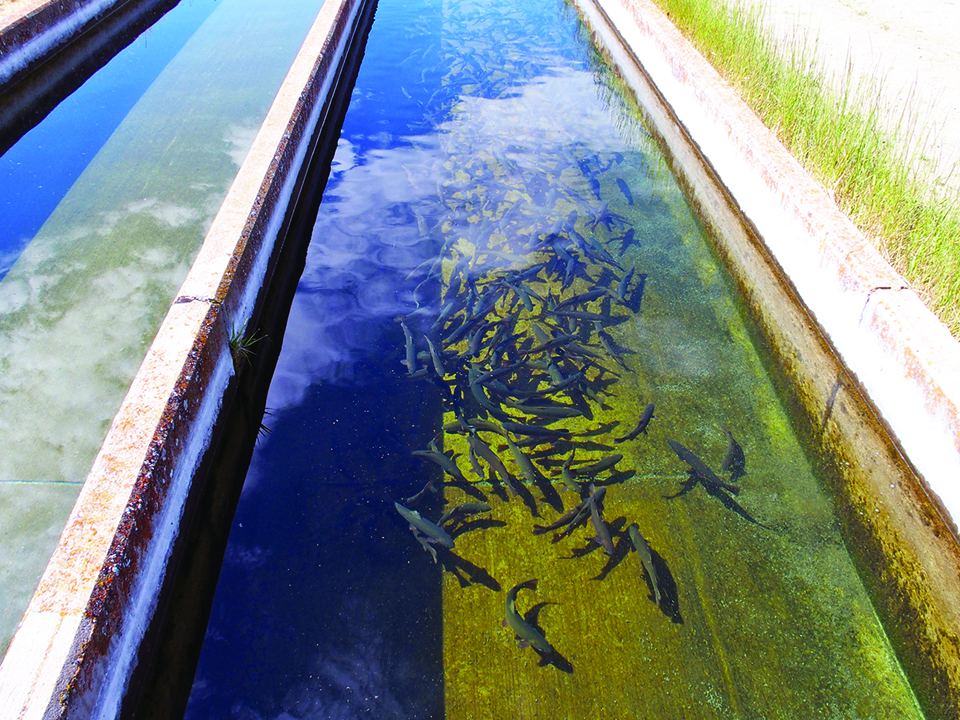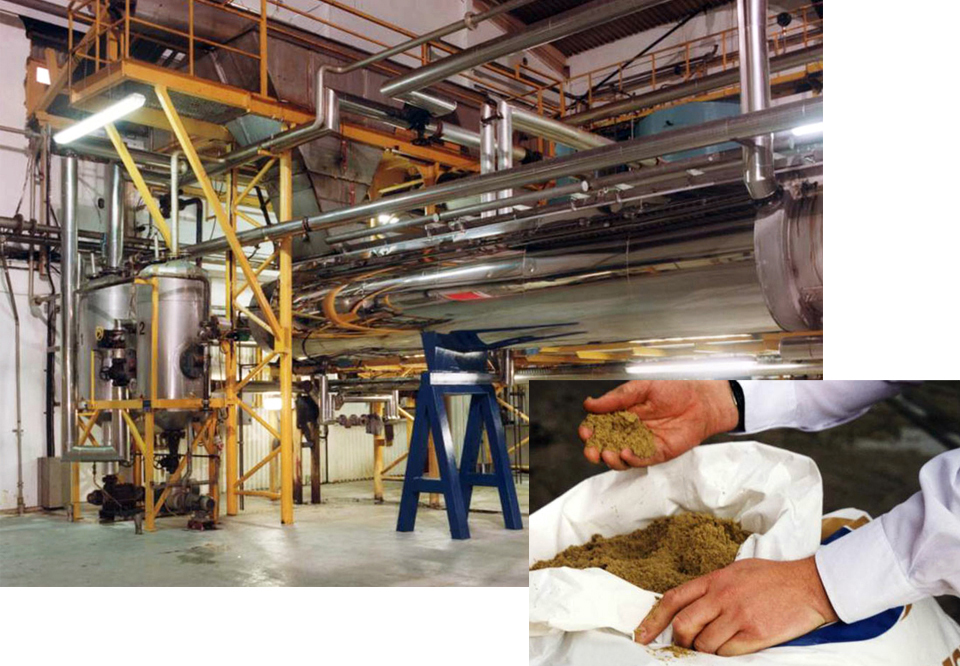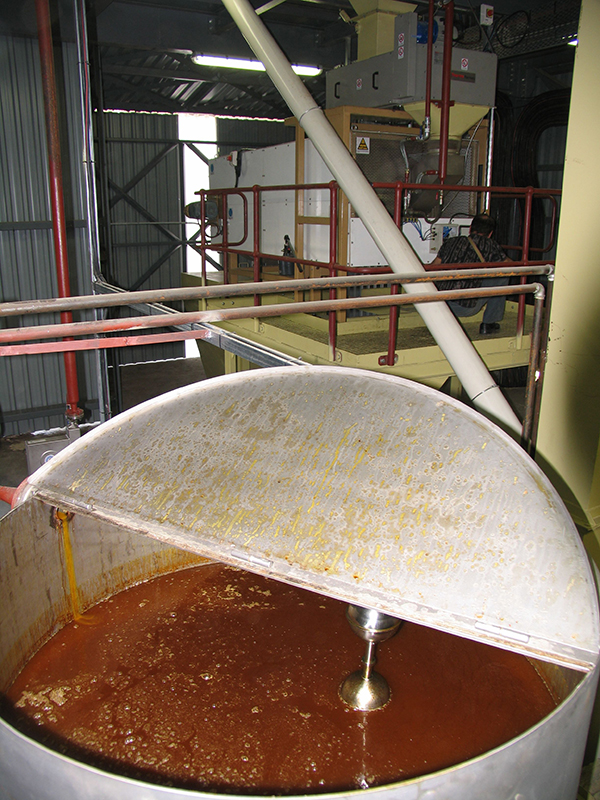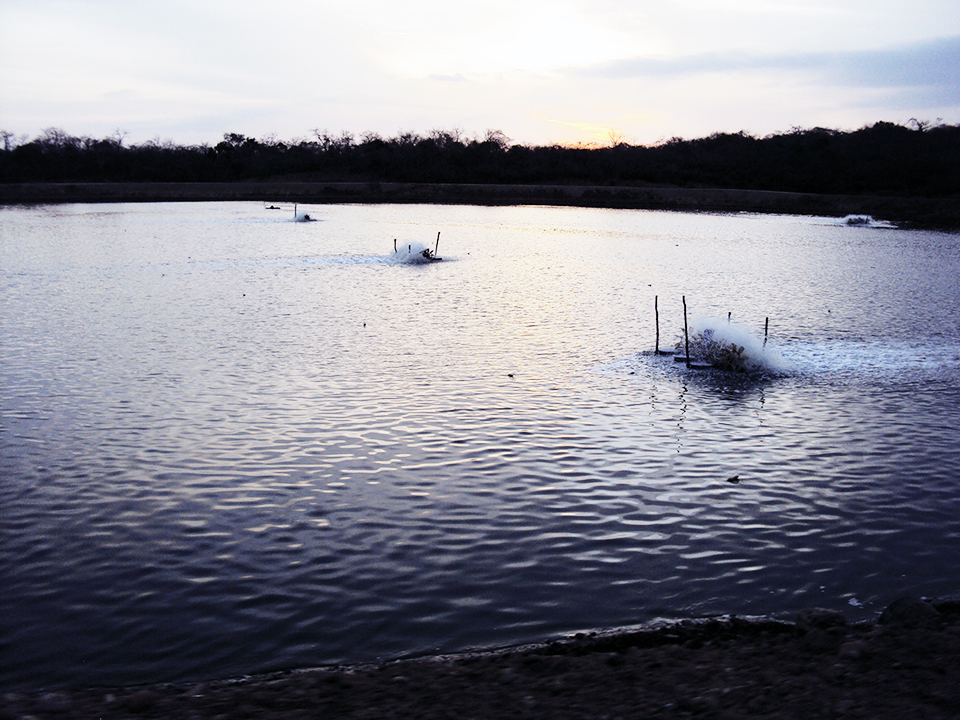Some secondary plant compounds have beneficial effects at low levels

An important limiting factor to the inclusion of some vegetable ingredients in aquafeeds is the presence of toxic secondary compounds, or antinutrients, in the ingredients. Information on the effects of these antinutrients on cultured aquatic species is limited, and additional research will be required to better utilize the potential of plant-derived materials in aquaculture feeds.
Major antinutrients
The major antinutrients in potential aquafeed ingredients of vegetable origin are glucosinolates, phytates, protease inhibitors, nonstarch polysaccharides (NSPs) and oligosaccharides, saponins, tannins, lectins and gossypols. Others include phytoestrogens, alkaloids, cyanogens, mimosine, cyclopropenoid fatty acids, canavanine, anti-vitamins and phorbol esters.
These substances are not involved in the primary metabolism of plants, but are synthesized by them, probably to deter herbivores and pathogens. Table 1 lists the antinutrients present in some plant-based feed ingredients.
Francis, Antinutrients present in some plant components, Table 1
| Plant Material | Protein Level (% DM) | Antinutrients Present |
|---|---|---|
| Soybean meal | 40 | phytic acid, protease inhibitors, oligosaccharides, lectins, saponins, phytoestrogens, antivitamins, allergens |
| Rapeseed meal | 36 | glucosinolates (low in canola), phytic acid, protease inhibitors, tannins |
| Lupin seed meal | 34 | protease inhibitors, NSPs, saponins, phyto- estrogens, alkaloids |
| Pea seed meal | 21 | phytic acid, protease inhibitors, NSPs, saponins, tannins, lectins, cyanogens, antivitamins |
| Sunflower oil cake | 32 | protease inhibitors, saponins, arginase inhibitor |
| Cottonseed meal | 43 | gossypol, phytic acid, phytoestrogens, cyclopropenoic acid, antivitamins |
| Mustard oil cake | 36 | glucosinolates, tannins |
| Sesame meal | 43 | phytic acid, protease inhibitors |
| Leucaena leaf meal | 29 | mimosine |
| Alfalfa leaf meal | 21 | protease inhibitors, saponins, phytoestrogens, antivitamins |
Glucosinolates
Glucosinolates are thioglucosides commonly found in plants of the family Cruciferae (e.g., rapeseed). On processing, the breakdown products of these serious antinutrients – such as isothiocyanates and nitriles – may be even more harmful. The compounds retard growth and disrupt the thyroid structure and function in fish, even at low levels. Extraction with water and moist heat has been found effective in reducing glucosinolate levels.
Phytates
Phytates (hexaphosphates of myoinositol) are common in plant seeds, and account for most of their phosphorus content (60 percent in soybean meal). Resistant to fish enzymes, phytates reduce the availability of dietary phosphorus. They also chelate with divalent and trivalent mineral ions, resulting in unavailability of these ions. Phytates form complexes with dietary proteins and reduce their digestibility.
High-phytate diets can retard growth and cause abnormalities in the intestinal histology of various commonly cultured fish species. Phytate can be reduced by dehulling cereals. In addition, heating, fermentation, addition of the enzyme phytase and supplementation with zinc can also remedy high phytate content in fish diets.
Protease inhibitors
Protease inhibitors are very common among plants like legumes, averaging 4 milligrams per gram in commercial soybean meal. They inhibit the activity of the proteolytic enzymes trypsin and chymotrypsin, and hinder feed protein utilization. Moist heat treatment at 120 degrees-C for 15 to 30 minutes almost completely neutralizes protease inhibitors.
Polysaccharides and oligosaccharides

Nonstarch polysaccharides and oligosaccharides of the raffinose family are important constituents of a wide variety of grain legumes and cereals, sometimes forming 30 percent of their dry weight. In fish, they decrease feed intake and lower feed digestibility by binding to bile acids and minerals, or by obstructing the action of digestive enzymes and movement of digesta in the intestine.
Soluble NSPs are more detrimental to fish growth than oligosaccharides. They absorb water and form gum-like masses in the intestine, and increase the viscosity of intestinal contents. Feed extrusion at high temperature can improve carbohydrate digestibility in general. NSPs in diets can be neutralized to an extent by treatment with enzymes such as glycanase. Gamma ray irradiation also shows promise in lowering their content.
Saponins
Saponins are steroid or triterpenoid glycosides found in many plants such as legumes, with concentrations of about 50 milligrams per kilogram in various legume seeds. Dietary saponins above a level of 1.5 grams per kilogram can retard growth and damage intestinal mucosa in fish.
Saponins may also affect protein availability by forming sparingly digestible saponin-protein complexes. When added to water, they are highly toxic to fish, because of the damage caused to the respiratory epithelium of the gills by their detergent action. Extraction with water or gamma ray irradiation aid in the removal or neutralization of saponins.
Tannins
Tannins occur widely in the plant kingdom as hydrolysable and condensed tannins. They can interfere with digestive processes by binding to feed proteins, vitamins, minerals, and digestive enzymes. Limited information is available about their effects on fish, although dietary hydrolysable tannins have been found to retard growth.
Dehulling seeds, soaking and autoclaving, treatment with alkali, fermentation with lactic acid bacteria, treatment with oxidizing agents, and supplementation with the tannin-complexing agent polyethylene glycol are all measures that counteract tannins.
Lectins
Lectins or phytohaemagglutinins are found in many legume seeds, and can bind reversibly to carbohydrate moieties of complex glyco-conjugates on membranes. When present in the diet, they can damage intestinal mucosa in fish. Their effect may be more potent in the presence of other antinutrients. Lectins can be destroyed by moist heating.
Gossypols
Gossypols are polyphenols found in plants of the genus Gossypium (cotton). They cause such negative effects as growth depression, intestinal and other internal organ abnormalities, and unbalanced sex ratio in fish. The formation of indigestible gossypol-protein complexes can produce deficiencies for some essential amino acids, such as methionine.
Many studies, however, have reported satisfactory fish growth when diets containing as high as 50 percent cottonseed meal are fed, probably because “glandless” cottonseed meal with less than 0.01 percent gossypol was used.
Beneficial effects
Some of these secondary plant compounds have beneficial effects at low levels, For example, some saponins promote fish growth at low dietary levels. Saponins might increase the digestibility of carbohydrate-rich foods because of their detergent-like activity, which reduces viscosity and thus prevents the normal obstructing action of such foods against the movement of digesta in the intestine.
Cyclical, short-term inclusion of trypsin inhibitors with diets has been shown to increase protein digestibility and growth performance in carp.
Some antinutrients counter each others’ effects. For example, saponin-tannin, tannin-lectin, and tannin-cyanogen interactions reportedly reduce their individual toxicity. Interactions between certain antinutrients, however, may increase toxicity.
(Editor’s Note: This article was originally published in the April 2002 print edition of the Global Aquaculture Advocate.)
Now that you've reached the end of the article ...
… please consider supporting GSA’s mission to advance responsible seafood practices through education, advocacy and third-party assurances. The Advocate aims to document the evolution of responsible seafood practices and share the expansive knowledge of our vast network of contributors.
By becoming a Global Seafood Alliance member, you’re ensuring that all of the pre-competitive work we do through member benefits, resources and events can continue. Individual membership costs just $50 a year.
Not a GSA member? Join us.
Authors
-
George Francis, Ph.D.
Department of Animal Nutrition and Aquaculture
Institute for Animal Production in the Tropics and Subtropics
University of Hohenheim
(480) D 70593 Stuttgart, Germany[101,100,46,109,105,101,104,110,101,104,111,104,45,105,110,117,64,101,103,114,111,101,103,114,102]
-
Klaus Becker, Ph.D.
Department of Animal Nutrition and Aquaculture
Institute for Animal Production in the Tropics and Subtropics
University of Hohenheim
(480) D 70593 Stuttgart, Germany
Tagged With
Related Posts

Aquafeeds
Breaking the 20 percent soy barrier in fish feed
Reduced performance in fish fed high-soy feeds has been blamed on antinutrients, low methionine content and palatability issues. Pretreatment to inactivate anti-nutritional compounds and supplementation with amino acids improves soy-based feed performance, but not to control levels.

Health & Welfare
Fishmeal, fish oil not limiting factors for aquaculture
The amount of fishmeal and fish oil used in aquaculture has remained static, while output from aquaculture has increased.

Aquafeeds
Antioxidants manage effects of oxidation on feeds, feed ingredients
Managing aquafeed quality from production of feed ingredients through manufacture, grow-out and processing is key in consistent, high-quality production.

Health & Welfare
Beneficial microbes and pathogen control
A range of alternative products is available to improve animal health and water quality, and control pathogen loads. Beneficial microbes produce antimicrobial compounds and suppress pathogen proliferation.



